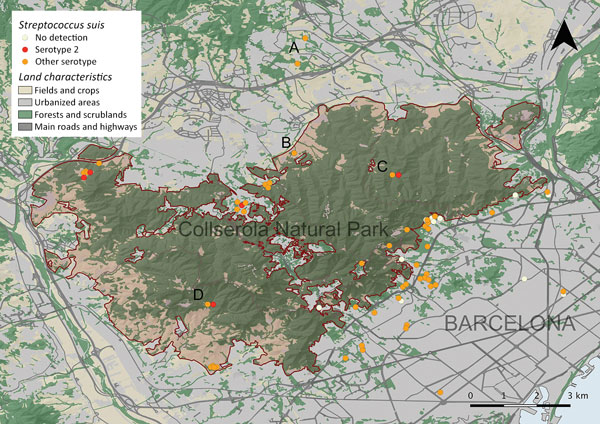Volume 24, Number 6—June 2018
Dispatch
Urban Wild Boars and Risk for Zoonotic Streptococcus suis, Spain
Figure 1

Figure 1. Part of the metropolitan area of Barcelona, Spain, showing land characteristics, Collserola Natural Park, the location of the wild boars sampled, and results of Streptococcus suis serotype 2 strains, identified by both isolation and molecular detection. Letters indicate locations where several wild boars were sampled, obtained by box traps (A, n = 21) or regular hunting campaigns (B, n = 9; C, n = 14; D, n = 5).
Page created: May 17, 2018
Page updated: May 17, 2018
Page reviewed: May 17, 2018
The conclusions, findings, and opinions expressed by authors contributing to this journal do not necessarily reflect the official position of the U.S. Department of Health and Human Services, the Public Health Service, the Centers for Disease Control and Prevention, or the authors' affiliated institutions. Use of trade names is for identification only and does not imply endorsement by any of the groups named above.